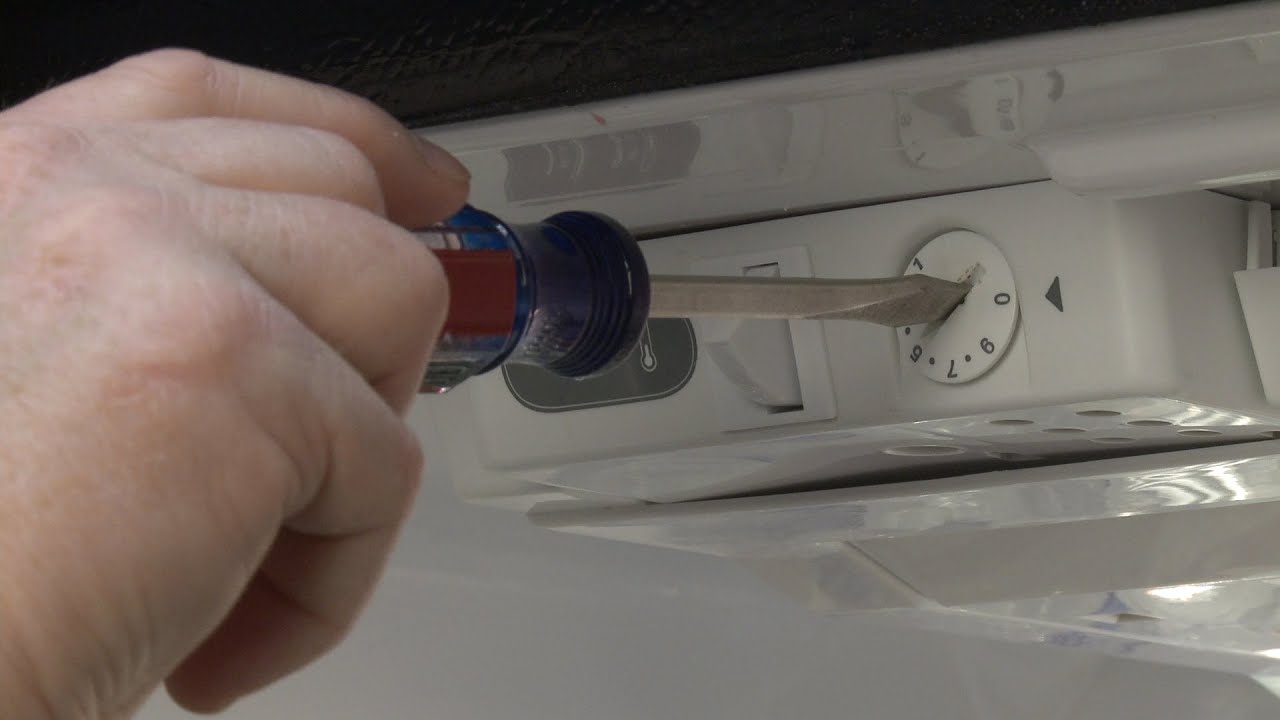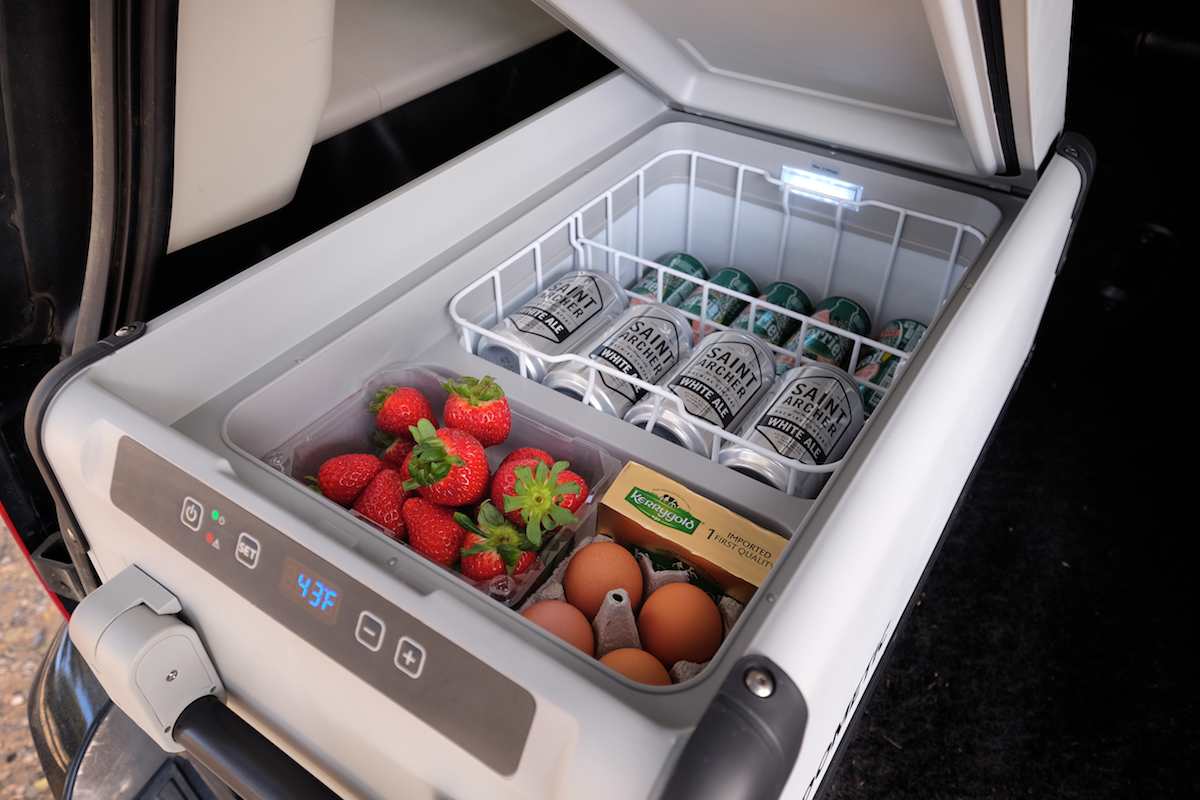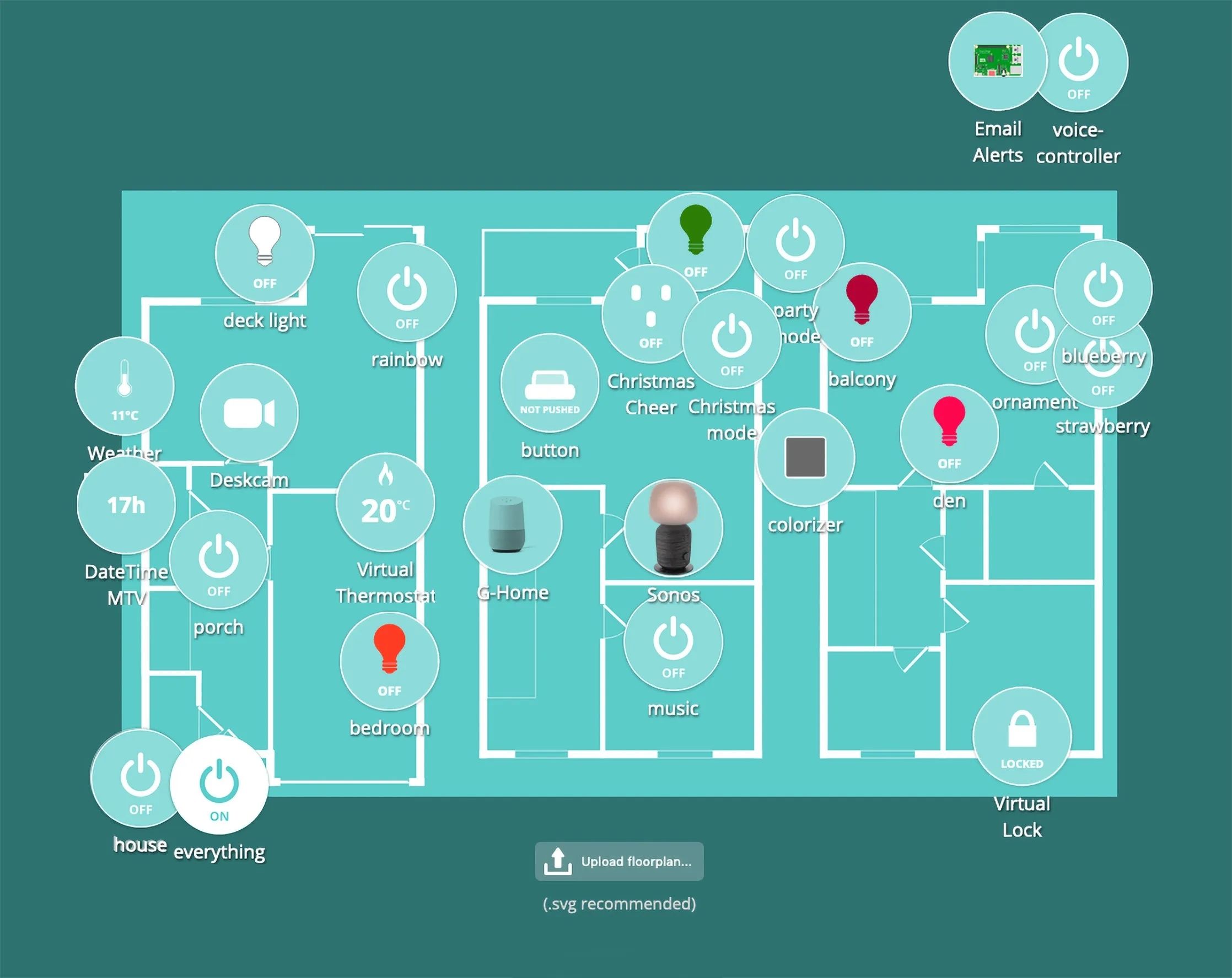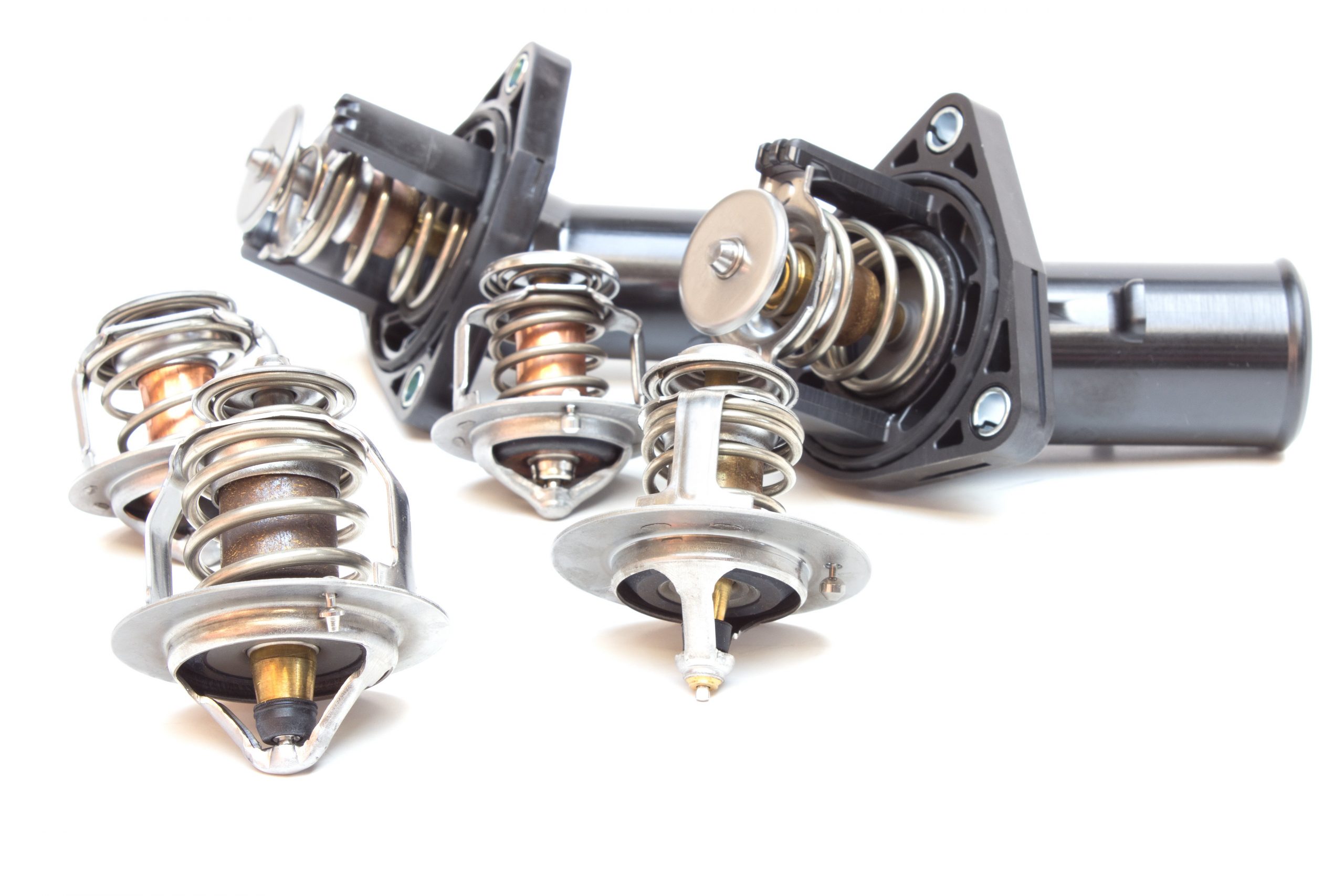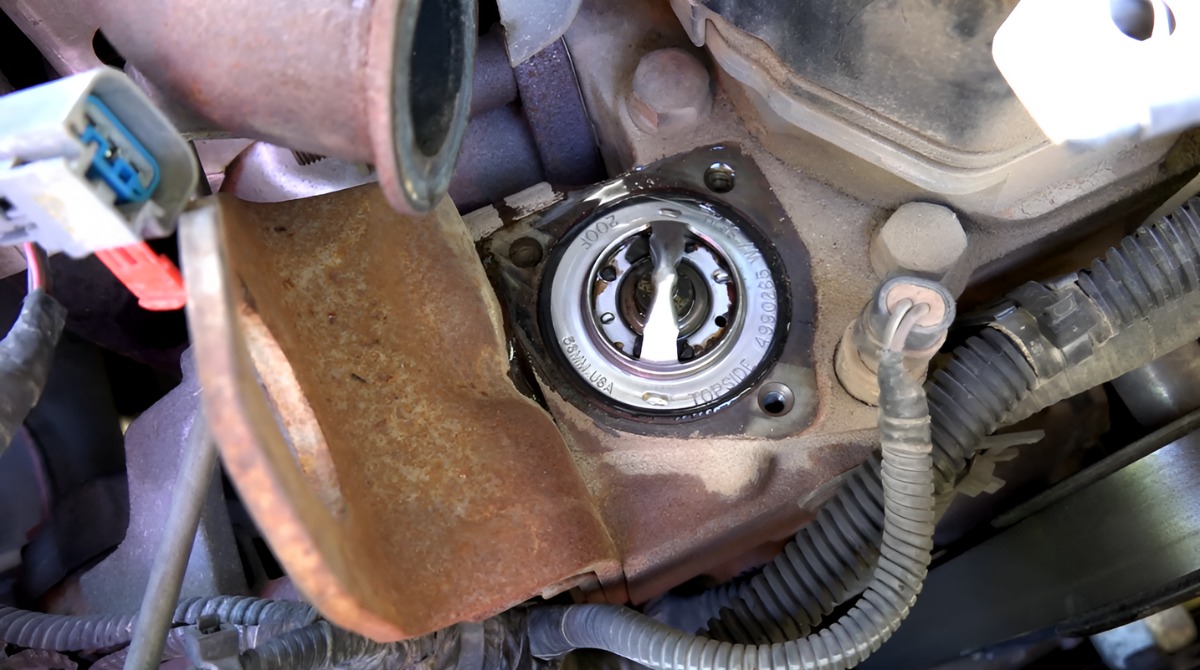Common Signs of Fridge Thermostat Failure
The thermostat is a crucial component of a refrigerator as it regulates the temperature and ensures that perishable items stay fresh for longer. However, like any other mechanical device, fridge thermostats can experience failures over time. It is important to be aware of the common signs that indicate a potential thermostat malfunction. By being proactive, you can take the necessary steps to diagnose and fix the issue before it escalates. In this section, we will discuss the most common signs of fridge thermostat failure.
1. Lack of Cooling or Overcooling: One of the primary indications of a faulty thermostat is when the fridge fails to cool food to the desired temperature. If you notice that your refrigerator is not adequately cooling, resulting in spoiled food, it may be a sign of thermostat failure. On the other hand, if the fridge is constantly overcooling, causing items to freeze or become icy, it may also indicate a malfunctioning thermostat.
2. Inaccurate Temperature Control: Another sign of thermostat failure is when the temperature inside the refrigerator does not match the settings on the control panel. If you consistently adjust the temperature controls but notice that the fridge becomes too warm or too cold, it could be a clear indication of a faulty thermostat.
3. Constant Running or Cycling On and Off: A malfunctioning thermostat can cause the fridge to run continuously or cycle on and off frequently. If you hear the compressor running constantly or notice that the refrigerator is turning on and off more frequently than usual, it may be due to thermostat issues. This can lead to energy inefficiency and a higher electricity bill.
4. Impact of External Factors on Fridge Thermostats: External factors such as power surges or electrical disturbances can also have an impact on the functionality of the fridge thermostat. If you recently experienced a power outage or any other electrical issue, it is worth considering that the thermostat may have been affected and could be contributing to irregular cooling performance.
5. Unresponsive Control Panel: An unresponsive or non-functional control panel is another potential sign of a faulty thermostat. If you find that the buttons or settings on the control panel of your fridge are not responding or if the display is not lighting up, it could indicate an issue with the thermostat. Sometimes, a simple reset or cleaning of the control panel may solve the problem, but if the issue persists, it is crucial to address it promptly.
In summary, common signs of fridge thermostat failure include lack of cooling or overcooling, inaccurate temperature control, constant running or cycling on and off, impact of external factors, and an unresponsive control panel. If you notice any of these signs, it is important to troubleshoot and address the issue to prevent further damage to your refrigerator and keep your perishable items fresh for longer.
Possible Causes of Fridge Thermostat Failure
Understanding the potential causes of fridge thermostat failure is essential in diagnosing and resolving the issue effectively. While there can be various factors contributing to a malfunctioning thermostat, certain common causes are worth considering. In this section, we will explore some of the possible causes of fridge thermostat failure.
1. Wear and Tear: Over time, normal wear and tear can affect the performance of the thermostat. Constant temperature changes, opening and closing of the refrigerator door, and regular usage can put stress on the internal components of the thermostat, leading to potential failures.
2. Electrical Issues: Electrical problems, such as power surges or voltage fluctuations, can adversely affect the functioning of the thermostat. These sudden electrical changes can damage the internal wiring or components, causing the thermostat to malfunction.
3. Thermostat Calibration: Fridge thermostats need to be properly calibrated to accurately measure and regulate the temperature. If the calibration is incorrect, it can result in inaccurate readings and temperature control. Over time, the calibration can drift, leading to thermostat failure.
4. Build-up of Ice or Frost: A buildup of ice or frost on the thermostat can interfere with its functionality. If the thermostat sensor is covered with ice, it may not accurately detect the temperature inside the fridge, causing the thermostat to fail at regulating the cooling effectively.
5. Damage to Thermostat Components: Physical damage to the thermostat components can also lead to failure. It could be due to mishandling during cleaning, accidental impact, or any other factor that causes damage to the internal wiring or connections.
6. Faulty Compressor or Fan: A malfunctioning compressor or fan can indirectly affect the performance of the thermostat. If the compressor or fan fails to work as intended, it can result in irregular cooling, making the thermostat work harder to maintain the desired temperature, eventually leading to its failure.
In summary, the possible causes of fridge thermostat failure include wear and tear, electrical issues, incorrect calibration, ice or frost buildup, damage to thermostat components, and faulty compressor or fan. Identifying the root cause of the thermostat failure is crucial in determining the appropriate troubleshooting steps to resolve the issue effectively.
Lack of Cooling or Overcooling
One of the common signs of a faulty fridge thermostat is when the refrigerator fails to cool food to the desired temperature or starts overcooling, resulting in frozen or icy food. Understanding the reasons behind these issues can help diagnose and address the problem effectively. In this section, we will discuss the potential causes of lack of cooling or overcooling in a refrigerator.
1. Thermostat Set Incorrectly: A simple but important factor to consider is whether the thermostat is set correctly. If it has been accidentally adjusted to a higher or lower temperature, it can impact the cooling performance. Double-check the thermostat settings and ensure that they match the desired temperature for the fridge.
2. Faulty Thermostat Sensor: The thermostat sensor is responsible for detecting the temperature inside the refrigerator and regulating it accordingly. If the sensor becomes faulty or inaccurate, it can lead to a lack of cooling or overcooling. The sensor may need to be adjusted or replaced to resolve the issue.
3. Blocked Air Vents: Air vents inside the refrigerator play a crucial role in distributing cold air evenly. If these vents become blocked by food items or debris, it can disrupt the airflow, resulting in inadequate cooling or restricted airflow, leading to overcooling in certain areas. Regularly check and clear any obstructions from the air vents to ensure optimal cooling performance.
4. Damaged Door Gasket: The door gasket creates an airtight seal when the refrigerator door is closed, preventing warm air from entering and cold air from escaping. If the door gasket is damaged or worn out, the fridge may fail to cool properly, resulting in a lack of cooling. Inspect the door gasket for any signs of wear or damage and replace it if necessary.
5. Insufficient Refrigerant: Refrigerant is the substance responsible for absorbing heat from the inside of the fridge and releasing it outside. If there is a leak or insufficient refrigerant, the cooling efficiency can be significantly reduced, leading to a lack of cooling. A professional technician will need to assess the situation, identify the leak, and recharge the refrigerant if necessary.
In summary, lack of cooling or overcooling in a refrigerator can be caused by factors such as incorrect thermostat settings, faulty thermostat sensor, blocked air vents, damaged door gasket, or insufficient refrigerant. It is important to identify and address these issues promptly to ensure that the refrigerator maintains the desired temperature and keeps perishable items fresh for longer.
Inaccurate Temperature Control
Accurate temperature control is vital for maintaining the freshness and quality of food in a refrigerator. When the temperature inside the fridge does not match the settings on the control panel, it can indicate a problem with the thermostat. Understanding the possible causes of inaccurate temperature control can help diagnose and resolve the issue effectively. In this section, we will explore some of the reasons behind inaccurate temperature control in a refrigerator.
1. Incorrect Temperature Calibration: Fridge thermostats need to be properly calibrated to ensure accurate temperature readings. Over time, the calibration can drift, leading to readings that are higher or lower than the actual temperature inside the refrigerator. If the thermostat is not correctly calibrated, it can result in inaccurate temperature control.
2. Faulty Thermostat Sensor: The thermostat sensor detects the temperature inside the fridge and relays the information to the thermostat, which then adjusts the cooling accordingly. If the sensor becomes faulty or damaged, it can give inaccurate readings, causing the temperature control to be inconsistent or incorrect. The sensor may need to be replaced to restore accurate temperature control.
3. Temperature Setting Interference: External factors such as the placement of the fridge or objects around it can impact temperature control. If the refrigerator is positioned near a heat source or if there are items blocking the air vents, it can affect the circulation of cold air, leading to inaccurate temperature control. Ensure that the fridge is placed in an appropriate location and that no obstructions are hindering the airflow.
4. Aging or Worn-out Thermostat: Over time, the internal components of a thermostat can deteriorate, leading to inaccurate temperature control. Wear and tear can impact the functioning of the thermostat, causing it to struggle to maintain the desired temperature. If the thermostat is old or showing signs of wear, it may need to be replaced to restore accurate temperature control.
5. Electrical Issues: Electrical problems such as power surges or fluctuations can affect the performance of the thermostat and result in inaccurate temperature control. These issues can damage the internal wiring or components, leading to inconsistent or incorrect temperature readings. If you suspect electrical problems, it is important to address the issue promptly and seek professional assistance if needed.
In summary, inaccurate temperature control in a refrigerator can be attributed to factors such as incorrect temperature calibration, faulty thermostat sensor, temperature setting interference, aging or worn-out thermostat, and electrical issues. Understanding these potential causes can help identify and resolve the issue, ensuring that the refrigerator maintains the desired temperature and keeps food fresh for longer periods.
Constant Running or Cycling On and Off
If you notice that your refrigerator is running constantly or cycling on and off more frequently than usual, it could be a clear indication of a faulty thermostat. Understanding the potential causes of this issue is crucial in diagnosing and resolving the problem effectively. In this section, we will discuss some of the reasons behind constant running or cycling on and off in a refrigerator.
1. Thermostat Set Too Low: One common cause of constant running or cycling on and off is when the thermostat is set to a lower temperature than necessary. If the thermostat is set too low, the refrigerator will continuously run in an attempt to reach the desired temperature, resulting in constant running or frequent cycling on and off. Adjust the thermostat to a more appropriate setting to resolve the issue.
2. Dirty Condenser Coils: Condenser coils are responsible for dissipating heat from the refrigerator’s interior. If these coils become dirty or covered in dust, they may not be able to effectively release the heat, causing the compressor to run continuously. Regularly clean the condenser coils to ensure optimal cooling performance and prevent the thermostat from working overtime.
3. Insufficient Air Circulation: Proper air circulation is essential for effective cooling in a refrigerator. If there is insufficient airflow around the appliance, it can cause the compressor to work harder and run constantly. Make sure that there is enough space around the refrigerator for air to circulate freely and avoid blocking the air vents inside the unit.
4. Faulty Compressor or Fan: A malfunctioning compressor or fan can also contribute to constant running or cycling on and off. If the compressor or fan is not functioning properly, it can disrupt the cooling cycle of the refrigerator, leading to continuous operation. A professional technician will need to assess and repair the faulty components to restore normal operation.
5. Refrigerant Leak: A refrigerant leak can cause the compressor to run continuously as it tries to compensate for the loss of refrigerant. If you suspect a refrigerant leak, it is crucial to address the issue promptly. Contact a professional technician to check for leaks, repair them, and recharge the refrigerant to ensure proper cooling and prevent further damage to the thermostat.
In summary, constant running or cycling on and off in a refrigerator can be caused by factors such as thermostat set too low, dirty condenser coils, insufficient air circulation, faulty compressor or fan, or a refrigerant leak. Identifying the root cause of the issue is essential in taking the appropriate steps to resolve the problem and prevent further damage to the refrigerator and its thermostat.
Impact of External Factors on Fridge Thermostats
External factors can have a significant impact on the functionality and performance of fridge thermostats. It’s important to consider these factors as they can affect the temperature regulation and overall operation of the refrigerator. By understanding the potential impact of external factors, you can better troubleshoot and address any issues that may arise. In this section, we will explore some of the external factors that can affect fridge thermostats.
1. Power Surges: Power surges are sudden increases in electrical voltage that can occur due to lightning strikes, electrical grid issues, or even switching on/off high-power appliances. These surges can damage electronic components, including the thermostat, rendering it ineffective or causing it to malfunction. It’s advisable to use surge protectors to safeguard your refrigerator from voltage spikes.
2. Temperature Fluctuations: Extreme temperature fluctuations, such as placing the refrigerator in a hot or humid environment, can affect thermostat performance. High temperatures outside the fridge can cause the cooling system to work harder, leading to accelerated wear and tear and potential thermostat failure. Avoid exposing the fridge to extreme temperatures and keep it in a cool, well-ventilated area.
3. Incorrect Installation: Improper installation can also impact the performance of the thermostat. If the refrigerator is not installed according to the manufacturer’s guidelines, it may result in air leaks, inadequate ventilation, or restricted airflow, causing the thermostat to work harder and potentially leading to premature failure. Ensure that the refrigerator is installed correctly for optimal performance.
4. Dirty Coils and Vents: Dust, debris, and dirt that accumulate on the condenser coils and air vents can impede the heat dissipation process and disrupt proper airflow. This can affect the cooling efficiency and cause the thermostat to work harder, potentially leading to failure. Regularly clean the coils and vents to maintain optimal performance and prolong the life of the thermostat.
5. Environmental Factors: Environmental conditions, such as high humidity levels or exposure to corrosive substances, can also impact refrigerator thermostats. High humidity can cause moisture buildup, leading to rusty electrical connections and potential malfunctions. Similarly, exposure to corrosive substances can damage internal components. Keep the refrigerator in a clean and dry environment, away from corrosive materials.
In summary, external factors such as power surges, temperature fluctuations, incorrect installation, dirty coils and vents, and environmental conditions can have a significant impact on the functioning of fridge thermostats. Being aware of these factors can help you take proactive measures to protect and maintain the thermostat’s performance, ensuring optimal temperature regulation and prolonging the lifespan of your refrigerator.
How to Diagnose Fridge Thermostat Failure
When experiencing issues with your refrigerator, it is important to identify whether the thermostat is the root cause of the problem. Proper diagnosis of fridge thermostat failure can save you time and money by ensuring that you address the correct issue. In this section, we will discuss some steps you can take to diagnose fridge thermostat failure.
1. Check Power Supply: Ensure that the refrigerator is properly plugged in and receiving power. If there is no power supply, the thermostat will not function. Check the power outlet and the circuit breaker to ensure they are not tripped or malfunctioning. If the problem persists, move on to the next step.
2. Verify the Control Panel: Review the function and responsiveness of the control panel on the refrigerator. If the control panel is unresponsive, the thermostat may be faulty. Make sure that the buttons and settings are working as intended, and there are no error messages or lights indicating a problem. If the control panel is not functioning properly, it may be time to consider thermostat replacement.
3. Monitor Cooling Performance: Observe the cooling performance of the refrigerator. If the fridge fails to cool food to the desired temperature or constantly overcools, it may indicate a thermostat failure. Use a thermometer to check the temperature inside the fridge and compare it to the set temperature on the control panel. If there is a significant discrepancy, it is likely that the thermostat is malfunctioning.
4. Listen for Unusual Noises: Pay attention to any unusual noises coming from the refrigerator. If you hear the compressor running constantly, or notice frequent cycling on and off, it could indicate a faulty thermostat. The thermostat regulates the compressor’s operation, so irregular cycling or constant running suggests thermostat malfunction.
5. Check Frost Build-up: Examine the inside of the refrigerator for excessive frost or ice accumulation. If you find a significant build-up, particularly around the thermostat sensor, it can interfere with the temperature control and indicate a malfunctioning thermostat. Clear any ice or frost and monitor if the issue persists.
6. Consult a Professional: If you have performed the above steps and are still unable to diagnose the issue, it may be time to seek professional help. A qualified appliance repair technician can conduct a thorough diagnosis of your refrigerator, including testing the thermostat, and provide you with an accurate assessment and solution.
In summary, diagnosing fridge thermostat failure involves checking the power supply, verifying the control panel, monitoring cooling performance, listening for unusual noises, checking for frost build-up, and consulting a professional if needed. By following these steps, you can effectively determine whether the thermostat is the culprit behind your refrigerator issues and take appropriate actions to resolve the problem.
Steps to Troubleshoot and Repair Fridge Thermostat Issues
When dealing with fridge thermostat issues, it is important to follow a systematic approach to troubleshoot and repair the problem. By following these steps, you can effectively identify and resolve the underlying issues with the thermostat. In this section, we will discuss the steps to troubleshoot and repair fridge thermostat issues.
1. Check the Thermostat Setting: Ensure that the thermostat is set to the desired temperature. Sometimes, the thermostat may have been accidentally adjusted, resulting in inadequate cooling or overcooling. Adjust the thermostat setting and monitor if the fridge begins to regulate the temperature correctly.
2. Clean the Coils and Vents: Dust, dirt, and debris can accumulate on the condenser coils and air vents, hindering proper airflow and heat dissipation. Clean the coils and vents using a brush or vacuum cleaner to ensure unhindered cooling performance. This can help prevent the thermostat from overworking and potentially resolve cooling issues.
3. Defrost the Fridge: If there is excessive frost or ice build-up inside the fridge, it can interfere with the temperature control. Turn off the refrigerator and allow it to defrost naturally or use a hairdryer to speed up the process. Once defrosted, clean out any remaining ice or frost. This can restore proper functioning to the thermostat and improve cooling performance.
4. Replace the Thermostat: If the above steps do not resolve the thermostat issues, it may be necessary to replace the thermostat. You can reference the appliance’s manual or seek professional help for instructions on replacing the thermostat. Ensure that the new thermostat is compatible with your refrigerator model and follow proper installation procedures.
5. Contact Professional Assistance: If you are not comfortable or confident in performing the repair yourself, it is advisable to seek professional assistance. A qualified technician can accurately diagnose the problem, determine if the thermostat needs to be replaced, and perform the necessary repairs or replacements to restore your refrigerator’s functionality.
6. Regular Maintenance: To prevent future thermostat issues, it is essential to practice regular maintenance. This includes cleaning the coils, checking the vents for obstructions, and ensuring that the refrigerator is positioned properly with adequate ventilation. Regular maintenance will help prolong the lifespan of the thermostat and prevent potential problems from arising.
In summary, troubleshoot and repair fridge thermostat issues by checking the thermostat setting, cleaning the coils and vents, defrosting the fridge, replacing the thermostat if necessary, seeking professional assistance as needed, and practicing regular maintenance. By following these steps, you can identify and resolve the underlying problems with the thermostat, ensuring optimal performance and prolonging the lifespan of your refrigerator.
When to Seek Professional Help
While troubleshooting and attempting to repair fridge thermostat issues can often be done by following the steps mentioned earlier, there are certain situations where seeking professional help becomes necessary. It is important to know when to call in the experts to ensure a proper diagnosis and resolution of the problem. In this section, we will discuss when it is appropriate to seek professional help for fridge thermostat issues.
1. Lack of Experience or Knowledge: If you are not familiar with the inner workings of refrigerators or do not have experience in appliance repair, it is advisable to seek professional assistance. Refrigerators are complex machines, and attempting to fix issues without proper knowledge can lead to further damage or frustration. A professional technician will have the necessary expertise to diagnose and resolve the problem correctly.
2. Electrical or Safety Concerns: Refrigerators involve electrical components and handling electrical systems can be dangerous, especially if you are unsure of what you are doing. If you are uncomfortable working with electricity or have concerns about safety, it is best to leave the repairs to a trained professional. They have the necessary skills and tools to handle electrical components safely.
3. Complex Repairs or Component Replacement: Certain fridge thermostat issues may require complex repairs or the replacement of specific components. This may involve disassembling the appliance, soldering, or working with sensitive internal parts. If the repair requires specialized expertise or tools beyond your capabilities, it is recommended to call in a professional who can accurately handle the repair and ensure the efficient functioning of the thermostat.
4. Still Experiencing Issues After Troubleshooting: If you have followed the troubleshooting steps and the fridge thermostat issues persist, it indicates a more complex problem that requires professional attention. Some underlying issues may not be easily visible or solvable without professional diagnostic equipment. By seeking professional help in such cases, you can avoid further damage to the refrigerator and ensure an accurate diagnosis and resolution.
5. Warranty Considerations: If your refrigerator is still under warranty, attempting DIY repairs may void the warranty coverage. It is important to check the terms and conditions of your warranty and consult with the manufacturer or authorized service provider to handle any thermostat issues covered by the warranty. This will ensure that any necessary repairs are carried out by qualified professionals without jeopardizing your warranty.
In summary, it is important to seek professional help for fridge thermostat issues when you lack experience or knowledge, encounter electrical or safety concerns, require complex repairs or component replacement, continue to experience issues after troubleshooting, or need to comply with warranty requirements. Professional technicians have the expertise and resources to diagnose and resolve thermostat issues accurately and efficiently, ensuring the optimal performance of your refrigerator.
Preventive Measures to Avoid Fridge Thermostat Failure
Taking preventive measures can help to avoid fridge thermostat failure, ensuring the optimal performance and longevity of your refrigerator. By implementing these preventative measures, you can minimize the risk of thermostat issues and maintain the proper functioning of your appliance. In this section, we will discuss some effective preventive measures to avoid fridge thermostat failure.
1. Regular Cleaning: Regularly cleaning the coils, vents, and condenser of your refrigerator helps to prevent dust and debris buildup. Clean the coils at least twice a year to ensure efficient heat dissipation. Blocked vents and dirty condenser coils can cause the thermostat to work harder, leading to potential failure.
2. Adequate Ventilation: Proper ventilation is crucial for maintaining optimal cooling performance. Ensure that there is adequate space around the refrigerator to allow air to circulate freely. Avoid placing the refrigerator in narrow or enclosed spaces that restrict airflow. Good air circulation helps the thermostat maintain consistent temperatures.
3. Proper Temperature Settings: Set the thermostat to the recommended temperature setting according to the manufacturer’s guidelines. Avoid excessively low or high temperature settings that can strain the thermostat and compressor, potentially leading to premature failure. Consult the appliance manual for the ideal temperature range for your specific refrigerator model.
4. Avoid Overloading: Overloading the refrigerator with more food items than it can efficiently cool can cause strain on the thermostat. Distribute the contents evenly and avoid overcrowding to ensure proper airflow and temperature regulation. This will reduce the workload on the thermostat and help maintain consistent cooling.
5. Power Surge Protection: Install a surge protector to safeguard your refrigerator against sudden power surges. Power surges can damage the electrical components, including the thermostat. A surge protector acts as a barrier, preventing voltage spikes from reaching the appliance and reducing the risk of thermostat failure due to electrical issues.
6. Regular Maintenance: Perform regular maintenance tasks such as checking and replacing the door gaskets if necessary, inspecting and cleaning the drain pan, and ensuring the proper functioning of the defrost system. Regular maintenance helps to identify potential issues early on, preventing them from escalating into thermostat failures.
7. Timely Repairs: Address any minor issues promptly before they develop into more significant problems. If you notice any unusual noises, temperature inconsistencies, or other signs of potential thermostat failure, seek professional help to diagnose and fix the issue. Timely repairs can prevent further damage and extend the lifespan of your refrigerator.
In summary, adopting preventive measures such as regular cleaning, ensuring adequate ventilation, setting proper temperatures, avoiding overloading, using power surge protection, performing regular maintenance, and addressing issues in a timely manner will help to avoid fridge thermostat failure. By incorporating these measures into your routine, you can ensure the optimal performance and longevity of your refrigerator and minimize the risk of thermostat-related problems.
Conclusion
Fridge thermostat failure can lead to issues such as lack of cooling, inaccurate temperature control, constant running, and cycling on and off. By understanding the common signs, possible causes, and how to diagnose thermostat problems, you can effectively troubleshoot and repair issues that may arise. It is important to remember that preventive measures are key to avoid thermostat failure and maintain the optimal performance of your refrigerator.
Regular cleaning of coils and vents, ensuring proper ventilation, setting accurate temperature controls, avoiding overloading, using surge protectors, conducting regular maintenance, and addressing issues in a timely manner are all crucial preventive measures. These measures help to minimize strain on the thermostat and reduce the risk of failure.
If troubleshooting and basic repairs are not successful in resolving thermostat issues, it is advisable to seek professional help. Certified technicians have the expertise and knowledge to accurately diagnose and repair complex thermostat problems. Seeking professional assistance is also recommended for those who lack experience, encounter electrical or safety concerns, or require component replacements or warranty compliance.
By taking preventive measures and promptly addressing any arising problems, you can ensure the proper functioning of your fridge thermostat, prolong its lifespan, and enjoy a consistently cool refrigerator that keeps your food fresh. Proper maintenance and care are essential in maintaining the efficiency and reliability of your appliance, preventing costly repairs and maximizing its longevity.







